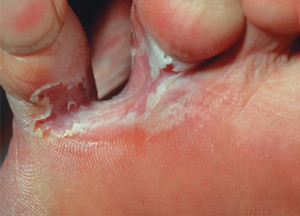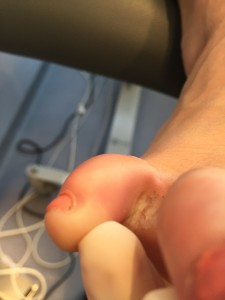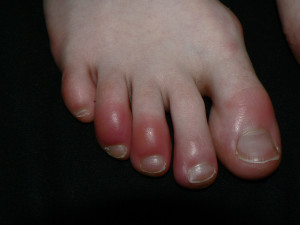Warning…. Icky picture to follow!
On Monday I saw toe patients with something sore and white between their toes. Both patients thought that it was tine (a good assumption) and had been treating it accordingly with anti fungal treatments with no success. What they actually had was a ‘soft corn’ or Helloma Molle between their toes caused by pressure between their 4th and 5th toes (the little toe and the one next to it).
So, how do you tell the difference, and how do you treat it?
Helloma Molle or soft corns are most commonly found between the 4th and 5th toes. They are white, painful and feel solid and as if there is a thickening of skin in the area. They often look white and can have a slight yellow appearance. They are painful to press on.
Tina between the toes is generally itchy, moist, white and sometimes with a red appearance. There is often splits in the skin which can cause pain.
How to treat:
Tinea: an anti fungal cream that you can purchase at the pharmacy should treat the infection within a week.
Helloma Molle: A visit to a podiatrist to remove the ‘soft corn’ is generally pain free and can be achieved in one visit. Your podiatrist should also advise you on footwear and ways to prevent the corn from recurring.



